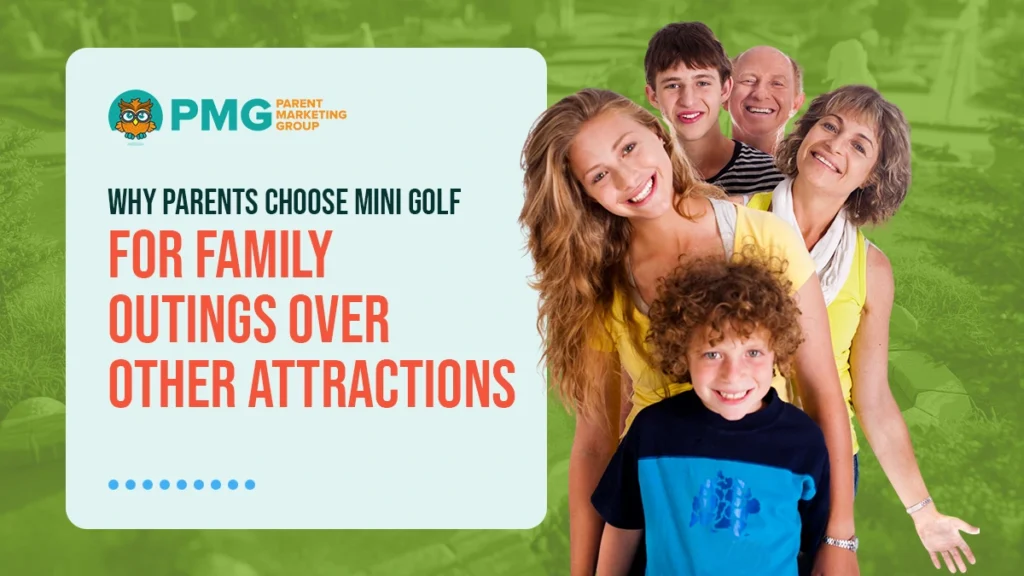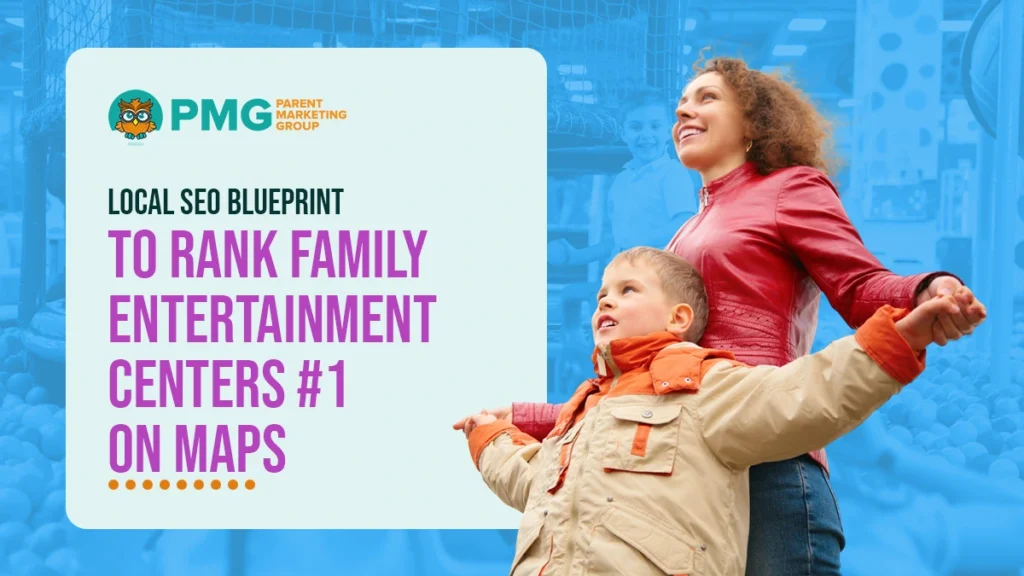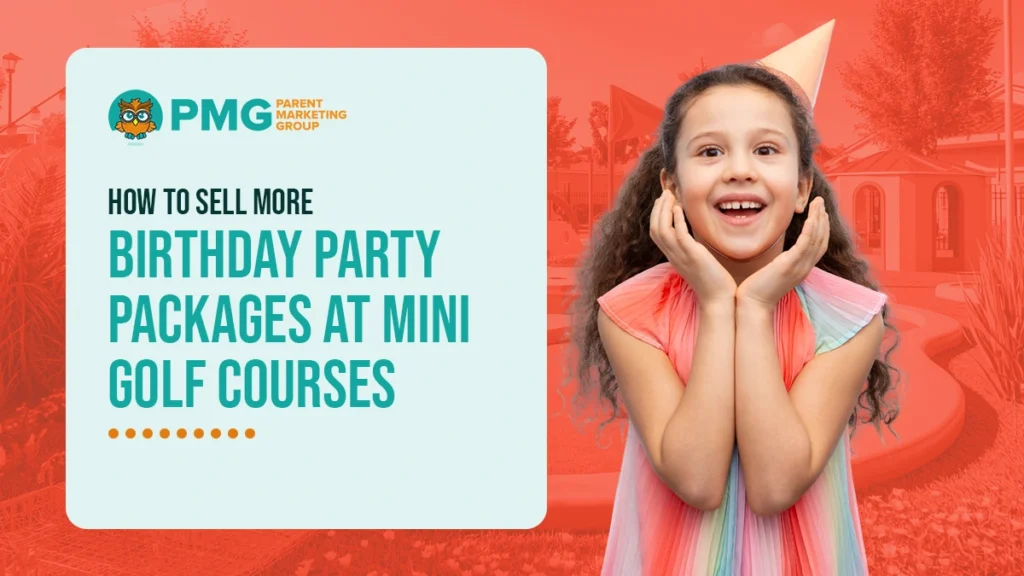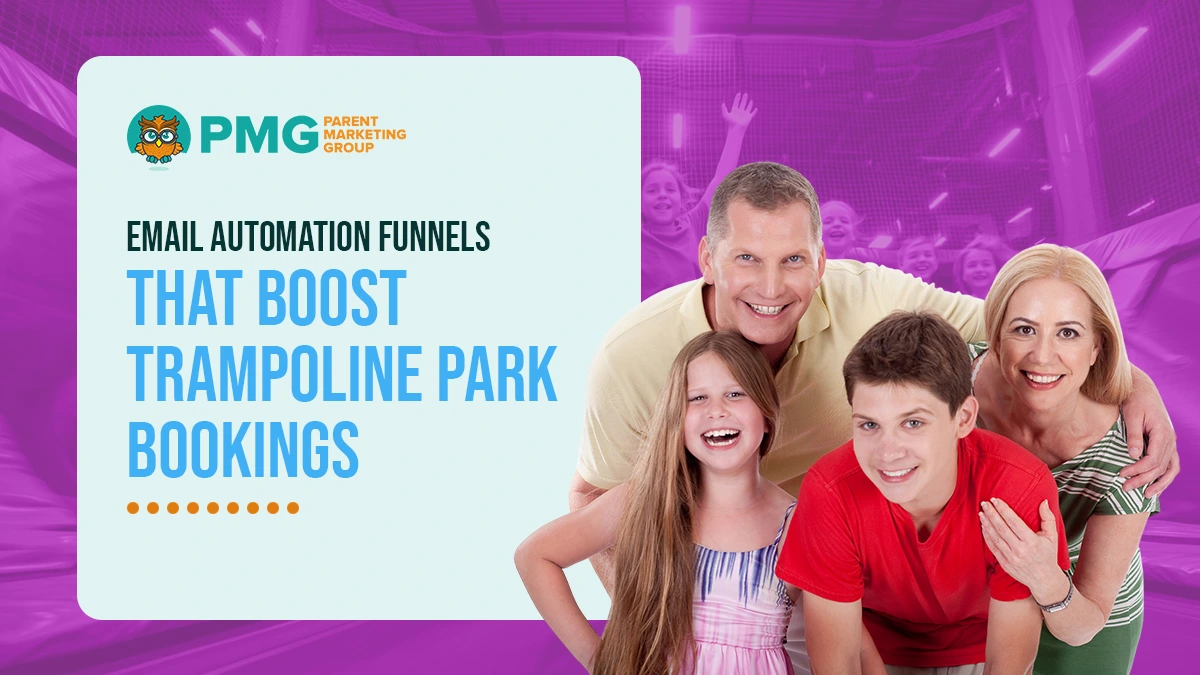
Email automation for trampoline parks turns interest into confirmed bookings through timely, relevant messages. Segment audiences by intent, age group, and occasion to deliver precise offers that match planning windows. Build journeys that cover inquiry follow-up, abandoned checkout recovery, birthday lead nurturing, and group or corporate requests.
Use clear package summaries, available dates, and one-click deposit links to reduce friction. Add reminders, limited incentives, and simple upgrade prompts to
raise average order value. After visits, send thank-you notes, photo requests, and review invites to drive retention and referrals. Track deposits, revenue, and opt-ins to refine cadence, creative, and promotions.
Nurture Emails for Trampoline Centers That Convert Browsers to Bookers
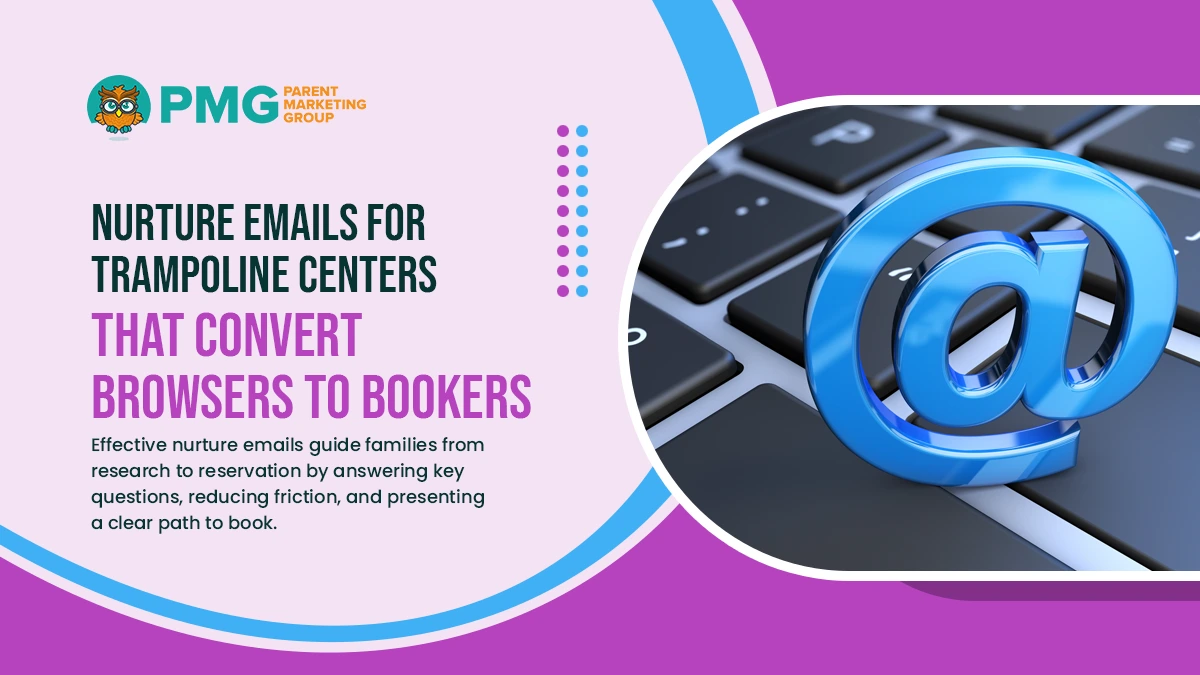
Effective nurture emails guide families from research to reservation by answering key questions, reducing friction, and presenting a
clear path to book. Focus on segmentation, timely triggers, and concise messages that reflect real packages and policies.
Segment by Intent and Age
Group subscribers by what they viewed and who they are. Create segments for birthday planners, walk-in visitors, group events, and corporate outings. Add age brackets 3 to 6, 7 to 11, and 12 plus to match imagery and copy. Use location tags for multi-site brands so each message reflects the correct park, pricing, and hours.
Content Framework That Reduces Friction
Every nurture email should address the essentials:
- What: package options, capacity, and time slots
- Who: age and height guidelines, supervision requirements
- How much: price ranges, deposits, and add-ons
- How to book: one primary button that links to the correct checkout step
Include two or three scannable benefits such as dedicated party hosts, safety-certified staff, and easy online waivers.
Cadence and Triggers
Build a short journey that respects planning windows.
- Day 0: instant follow-up with package summary and top three reasons to book
- Day 2: highlight birthday or group benefits with a calendar link
- Day 5: showcase social proof and a limited incentive with clear terms
- Day 9: final reminder with a reply option for assistance
Re-enter contacts when they revisit pricing, start checkout, or view birthday content again.
Personalization, Offers, and Social Proof
Merge the child’s first name or event month when available. Swap images to match the age segment. Use simple incentives that protect margins, such as weekday value pricing or a small arcade credit with a deposit. Add two short reviews that mention staff kindness, safety, and cleanliness. Present one upgrade near the call to action, such as a private room or extra time block.
Deliverability and Measurement
Authenticate domains with SPF, DKIM, and DMARC. Suppress hard bounces and chronic non-openers. Track deposit rate, revenue per email, and time to booking by segment. Test subject lines, hero images, and button copy, then scale the combinations that produce confirmed bookings.
Birthday Email Campaigns Trampoline Parks Can Run All Year
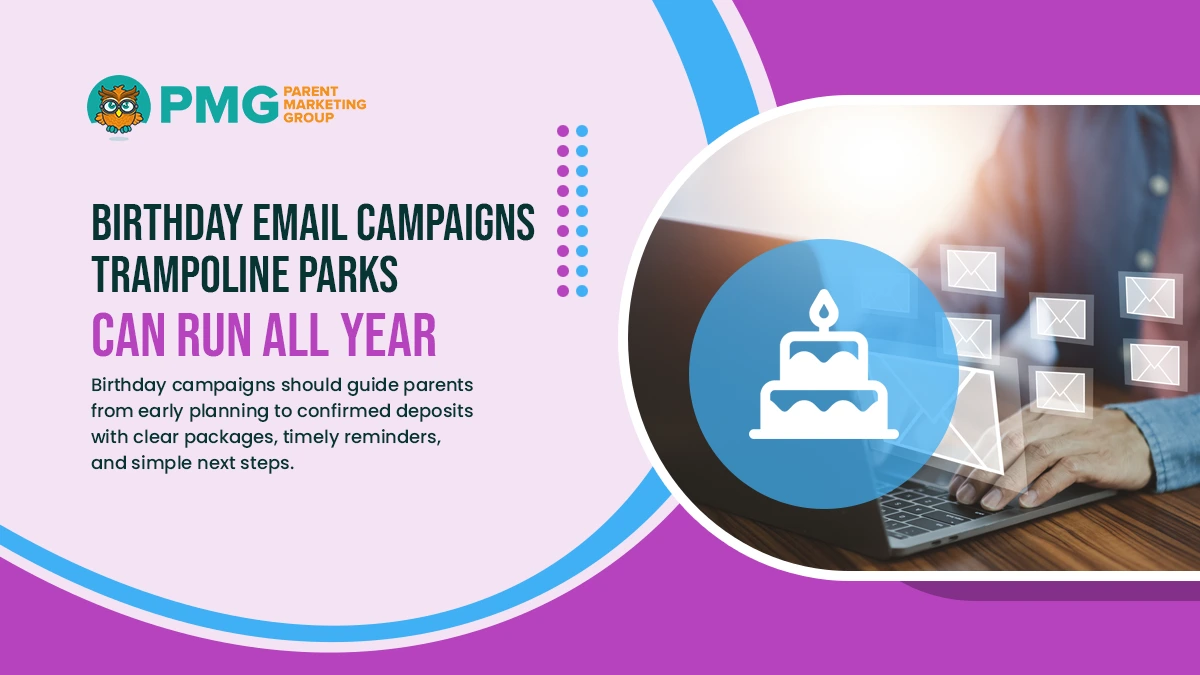
Birthday campaigns should guide parents from early planning to confirmed deposits with clear packages, timely reminders, and simple next steps.
Build a dependable framework that runs continuously and adapts to local calendars.
Evergreen Birthday Journeys
Create a standing sequence that activates for every new birthday lead. Start with a welcome email summarizing packages, age ranges, time slots, and deposit options. Follow with a message focused on party logistics, including waiver links, supervision guidelines, and food policies.
Add a social proof email with two short reviews, a clean facility photo, and staff credentials. Close with a limited incentive that protects margins, such as weekday value pricing or a small arcade credit with a deposit. Use dynamic content to insert the correct park location, hours, and pricing.
Seasonal Cadence and Timing
Layer seasonal sends on top of the evergreen journey to match planning windows.
- Back to school: promote fall weekend availability and weekday value packages
- Winter break: highlight indoor comfort, group capacity, and early deposit perks
- Spring: feature graduation and class parties with photo bundles
- Summer: push weekday afternoons with preferred rates and quick checkout
Send reminder emails at 30, 14, and 7 days before the child’s birthday month to capture planners and last-minute decisions. For multi-child households, stagger timing and personalize age-appropriate imagery.
Content, Offers, and Creative Standards
Keep each email focused on a single action. Use a concise hero with three benefits: dedicated party hosts, safety-certified staff, and fast online booking. Present package cards with price ranges and inclusions. Offer one optional upgrade near the primary button, such as a private room or extra time.
Maintain clear terms for deposits, headcount minimums, and reschedule policies. Use mobile-friendly layouts with large tap targets and short paragraphs. For offers, avoid stacking and limit incentives to a defined window. Track with promo codes by channel to attribute revenue correctly.
Compliance, Deliverability, and Measurement
Collect consent with clear opt-in language and provide an easy unsubscribe. Authenticate domains with SPF, DKIM, and DMARC. Suppress hard bounces and inactive contacts to protect sender reputation. Measure deposit rate, revenue per email, and time to booking by segment and season. Test subject lines, hero images, and button copy, then scale the combinations that produce confirmed party bookings.
Automated Booking Reminders for Deposits, Waivers, and Arrival Times
 Automated reminders
Automated reminders reduce no-shows, remove confusion, and protect revenue. Each message should use clear language, precise timing, and a single next step so families complete the required actions on time.
Deposit Confirmation and Payment Prompts
Send an instant confirmation after checkout that summarizes the package, date, time, and headcount minimums. Include a secure link to view the invoice and pay any remaining deposit. Schedule prompts at seven days and seventy-two hours before the payment deadline with the exact balance and a one-click payment button.
If a payment fails, trigger a dedicated recovery email and SMS with a refreshed link and a direct contact option. Suppress all prompts once payment posts to avoid duplicate notices.
Waiver Completion and Safety Readiness
Deliver waiver links to the booking contact immediately, then provide a shareable guest invite. Use reminders on the seven days, forty-eight hours, and the morning of the event for guests who have not completed forms. Include a brief readiness checklist:
- Pre-filled waiver link for each guest and legal guardian
- What to bring and what to wear, including grip socks if required
- Age and height guidelines, supervision rules, and safety briefing timing
Confirm completion with a success email that reiterates check-in steps and support contacts.
Arrival Time, Check-In, and Day-Of Logistics
Send a schedule email forty-eight hours before the event with map links, parking details, and the check-in location. Include the party host name and front desk phone number. Remind guests to arrive fifteen minutes early for wristbands and safety orientation.
On the morning of the event, deliver a concise SMS with start time, address, and a short link to waivers and directions. If the schedule changes, trigger an immediate update to all attendees. A quick reference list helps guests arrive prepared:
- Arrival time and entry point
- Parking instructions and map link
- Final waiver link and on-site contact
Channels, Cadence, and Measurement
Use email for full details and SMS for time-sensitive prompts. Respect quiet hours and local regulations. Track open rate, link clicks, waiver completion, on-time arrival, payment success, and day-of question volume. Adjust timing, copy, and links based on results. Reliable reminders shorten lines, improve guest readiness, and increase on-time event starts.
Measurement, Revenue Attribution, and Continuous Testing
Accurate measurement links each email touchpoint to deposits and visits. Use a consistent data model, clear attribution rules, and a structured testing plan to improve
return on marketing spend.
Define KPIs and Build a Source of Truth
Establish primary metrics that reflect revenue impact. Track deposit rate, purchase rate, average order value, refund rate, revenue per email, and time to booking. Align counts across GA4, the booking system, and the CRM. Use a daily reconciliation that compares transactions and flags gaps to resolve issues quickly.
Implement Robust Attribution
Tag every link with UTM parameters that include channel, campaign, creative, and audience. Capture promo codes at checkout and store them with the order. Pass order values and identifiers into GA4 and the CRM. Import offline conversions to Google Ads and other platforms when bookings occur by phone.
Use a consistent attribution rule set, such as the last non-direct click, for reporting and position-based or data-driven models for budget decisions. Document attribution windows for deposits and final payments so revenue is not double-counted.
Cohort and Journey Analysis
Evaluate performance by audience and intent. Segment cohorts for birthday planners, groups, corporate events, and walk-ins. Measure lift for contacts who received nurture emails compared to similar contacts who did not. Review assisted conversions across channels to understand how email influences search and social. Identify drop-off points between inquiry, waiver completion, deposit, and visit.
Structured Testing and Learning
Run controlled experiments with a clear hypothesis and outcome metric. Limit each test to one major variable. Recommended test areas:
- Subject lines and preheaders
- Hero image vs. minimal design
- Button copy and placement
- Incentive type and value
In advance, define sample size, run time, and a stopping rule. Record results in a simple log that includes version, dates, audience, and outcome. Roll out winners to production templates and retire underperformers.
Dashboards, Alerts, and Governance
Create dashboards that show KPIs by park, segment, and campaign. Add alerts for anomalies such as sudden drops in deposit rate or spikes in unsubscribe rate. Review data weekly with operations and guest services to capture qualitative insights. Maintain a version-controlled tagging and UTM guide so new campaigns follow the same standards. Consistent measurement and disciplined testing produce reliable gains in bookings and revenue.
Conclusion
Thoughtful email automation turns interest into confirmed visits. Nurture sequences answer key questions and guide families to the right package. Birthday campaigns run year-round to match planning windows and drive timely deposits. Automated reminders complete waivers, clarify logistics, and reduce no-shows. Reliable measurement and structured testing link each message to revenue, so budgets fund what works and improve underperforming steps. With these elements working together, trampoline parks can increase bookings, raise guest satisfaction, and build repeat visitation.
Ready to build an automation plan that fits your park and market. Call
(716) 303-4133 or contact the team at
https://parentmarketing.com/contact-us.
 Email automation for trampoline parks turns interest into confirmed bookings through timely, relevant messages. Segment audiences by intent, age group, and occasion to deliver precise offers that match planning windows. Build journeys that cover inquiry follow-up, abandoned checkout recovery, birthday lead nurturing, and group or corporate requests.
Use clear package summaries, available dates, and one-click deposit links to reduce friction. Add reminders, limited incentives, and simple upgrade prompts to raise average order value. After visits, send thank-you notes, photo requests, and review invites to drive retention and referrals. Track deposits, revenue, and opt-ins to refine cadence, creative, and promotions.
Email automation for trampoline parks turns interest into confirmed bookings through timely, relevant messages. Segment audiences by intent, age group, and occasion to deliver precise offers that match planning windows. Build journeys that cover inquiry follow-up, abandoned checkout recovery, birthday lead nurturing, and group or corporate requests.
Use clear package summaries, available dates, and one-click deposit links to reduce friction. Add reminders, limited incentives, and simple upgrade prompts to raise average order value. After visits, send thank-you notes, photo requests, and review invites to drive retention and referrals. Track deposits, revenue, and opt-ins to refine cadence, creative, and promotions.
 Effective nurture emails guide families from research to reservation by answering key questions, reducing friction, and presenting a clear path to book. Focus on segmentation, timely triggers, and concise messages that reflect real packages and policies.
Effective nurture emails guide families from research to reservation by answering key questions, reducing friction, and presenting a clear path to book. Focus on segmentation, timely triggers, and concise messages that reflect real packages and policies.
 Birthday campaigns should guide parents from early planning to confirmed deposits with clear packages, timely reminders, and simple next steps. Build a dependable framework that runs continuously and adapts to local calendars.
Birthday campaigns should guide parents from early planning to confirmed deposits with clear packages, timely reminders, and simple next steps. Build a dependable framework that runs continuously and adapts to local calendars.
 Automated reminders reduce no-shows, remove confusion, and protect revenue. Each message should use clear language, precise timing, and a single next step so families complete the required actions on time.
Automated reminders reduce no-shows, remove confusion, and protect revenue. Each message should use clear language, precise timing, and a single next step so families complete the required actions on time.

